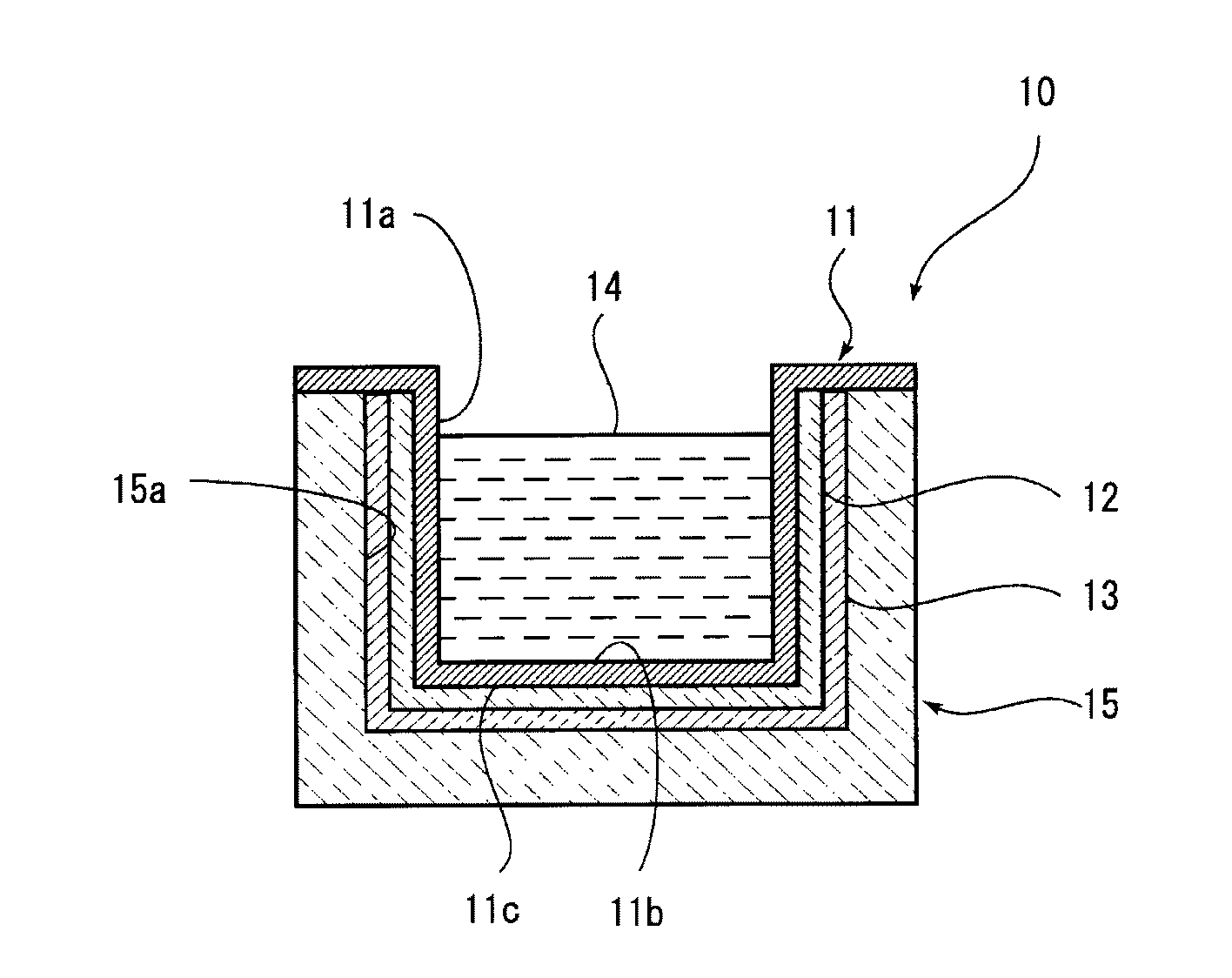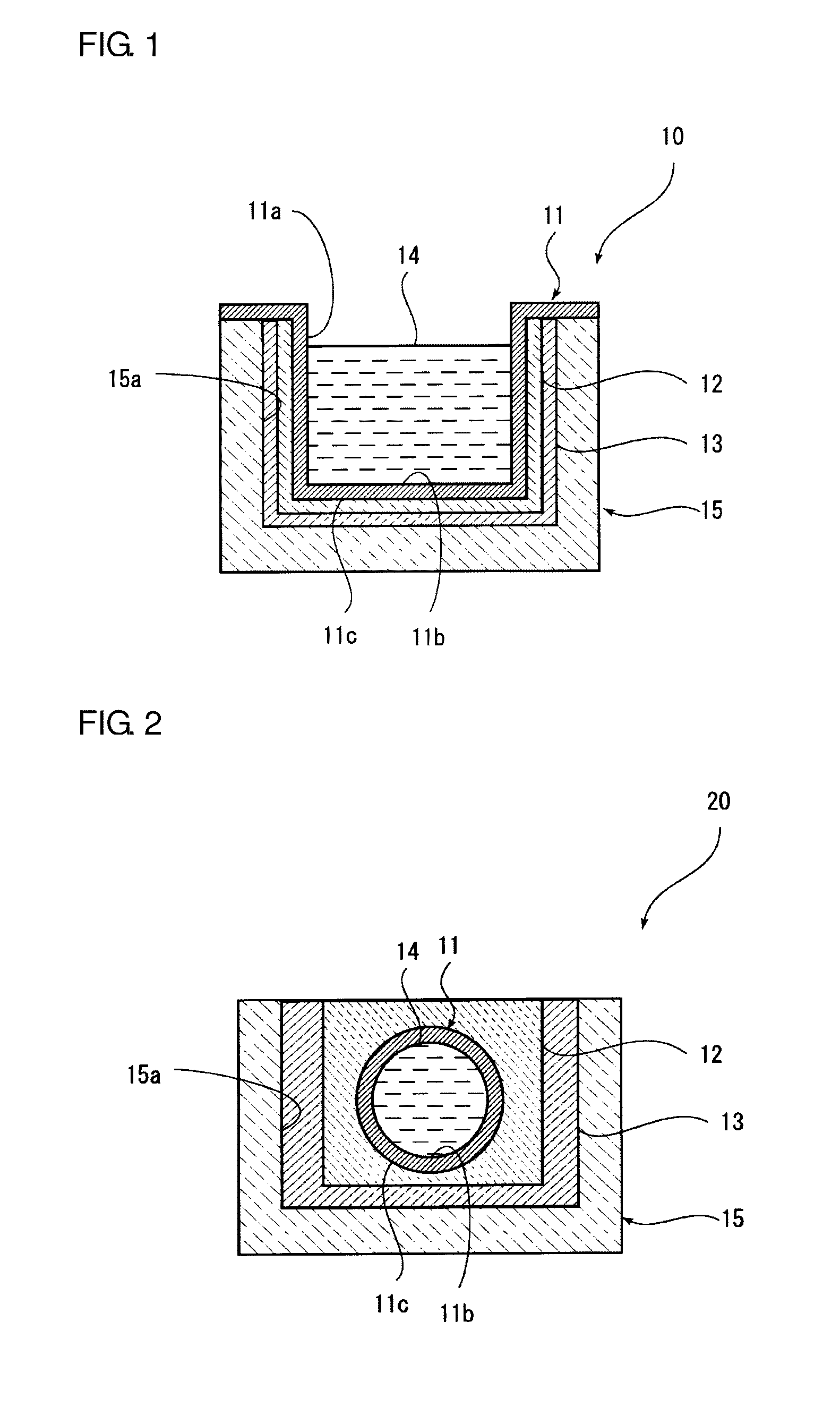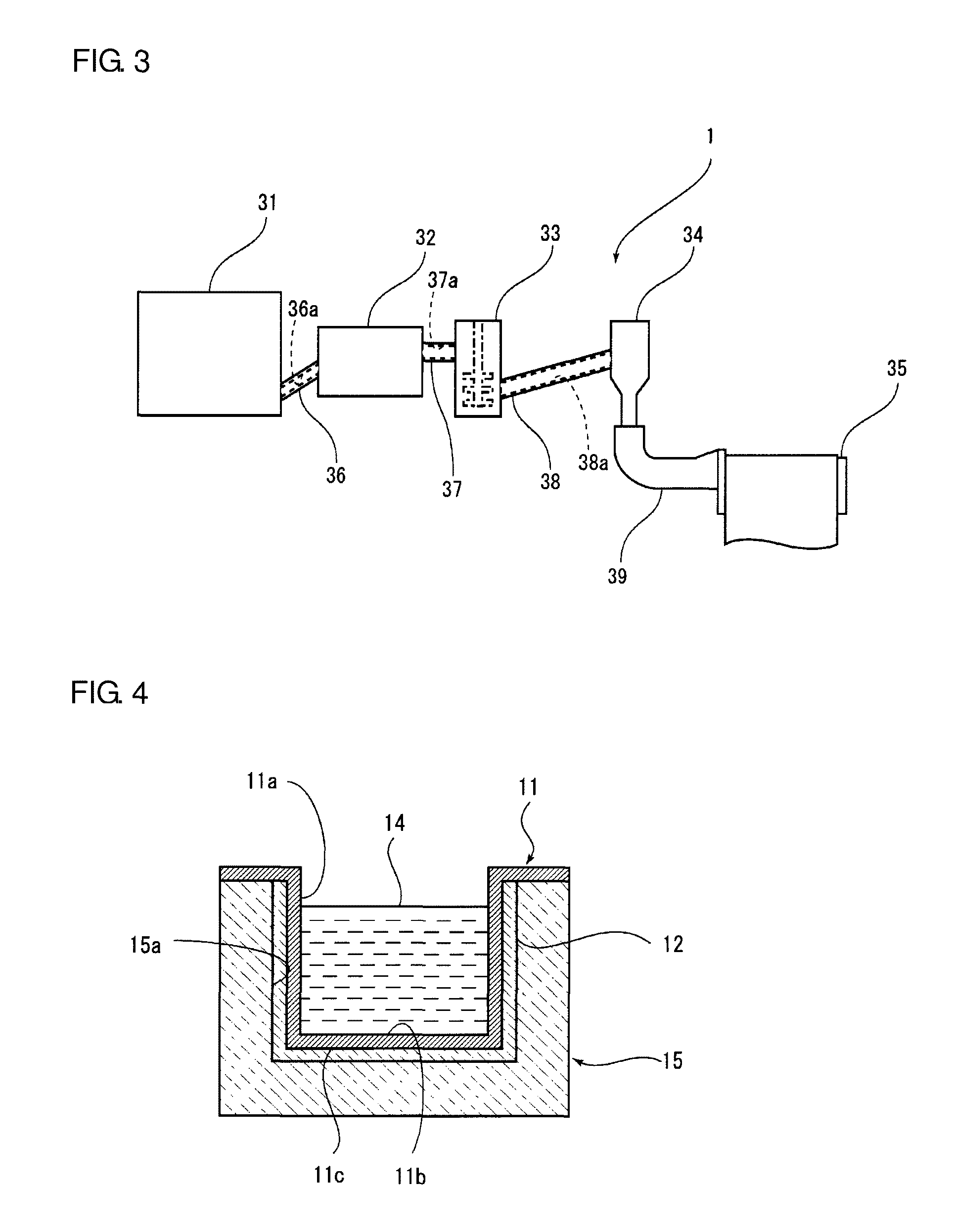Glass manufacturing container, glass manufacturing apparatus with the same and glass manufacturing method using glass manufacturing apparatus
a glass manufacturing and glass technology, applied in the direction of manufacturing converters, manufacturing tools, furnaces, etc., can solve the problems of limiting the glass melting conditions, affecting the effect of glass melting conditions, and inability to sufficiently reduce so as to achieve effective reduction of the residence of bubbles in the glass and the formation of bubbles due to water contained in the glass
- Summary
- Abstract
- Description
- Claims
- Application Information
AI Technical Summary
Benefits of technology
Problems solved by technology
Method used
Image
Examples
first experimental example
[0119]In this experimental example, an experiment was conducted for confirming the effects obtained by bringing an electron donor into contact with a glass manufacturing container. Specifically, as shown in FIG. 8, a plate 40 made of Pt was first placed on an electron donor 12 made of powder of an electron donating material, a mass of glass 41 was put on the Pt plate 40, allowed to stand at 1550° C. for 15 minutes and then cooled to a room temperature, and bubbles in the glass were visually observed. In addition, an experiment was conducted, as the first comparative example, also on the case where the electron donor 12 was not provided, and bubbles in the glass were visually observed. In the first experimental example and the first comparative example, Neoceram (β-OH: 0.4 / mm) which is Li2O—Al2O2—SiO2-based glass manufactured by Nippon Electric Glass Co. Ltd. was used.
[0120]The photograph shown in FIG. 9 is a photograph of glass obtained when the electron donor 12 was not provided. A...
second experimental example
[0123]In this experimental example, an experiment was conducted for confirming the effects obtained by providing an electron acceptor. Specifically, as shown in FIG. 14, an electron donor 12 similar to that in the first experimental example was brought into contact with the center of a Pt plate 40, and an electron acceptor 13 made of Li doped NiO solid solution powder was brought into contact with the peripheral part of the Pt plate 40. Then, like the first experimental example, a mass of glass 41 was put on the plate, allowed to stand at 1550° C. for 15 minutes and then cooled to a room temperature, and bubbles in the glass were visually observed. In addition, an experiment was conducted, as the second comparative example, also on the case where the electron donor 12 and the electron acceptor 13 were not provided, and bubbles in the glass were visually observed. In the second experimental example and the second comparative example, OA-10 (β-OH: 0.55 / mm) which is alkali-free glass m...
third experimental example
[0126]In this experimental example, as shown in FIG. 17, the same experiment as in the second experimental example was conducted except that the electron donor 12 was brought into contact with the entire surface of the Pt plate 40 and the electron acceptor 13 was brought into contact only with the underside of the electron donor 12 and kept from contact with the Pt plate 40. The results are shown in FIG. 18. As shown in FIG. 18, in this experimental example, substantially no bubble was left. This result shows that the formation of bubbles can be particularly effectively reduced by bringing an electron donor into contact with a container body and bringing an electron acceptor into contact with the opposite surface of the electron donor to the container body.
PUM
| Property | Measurement | Unit |
|---|---|---|
| temperatures | aaaaa | aaaaa |
| temperature | aaaaa | aaaaa |
| temperature | aaaaa | aaaaa |
Abstract
Description
Claims
Application Information
 Login to View More
Login to View More - R&D
- Intellectual Property
- Life Sciences
- Materials
- Tech Scout
- Unparalleled Data Quality
- Higher Quality Content
- 60% Fewer Hallucinations
Browse by: Latest US Patents, China's latest patents, Technical Efficacy Thesaurus, Application Domain, Technology Topic, Popular Technical Reports.
© 2025 PatSnap. All rights reserved.Legal|Privacy policy|Modern Slavery Act Transparency Statement|Sitemap|About US| Contact US: help@patsnap.com



